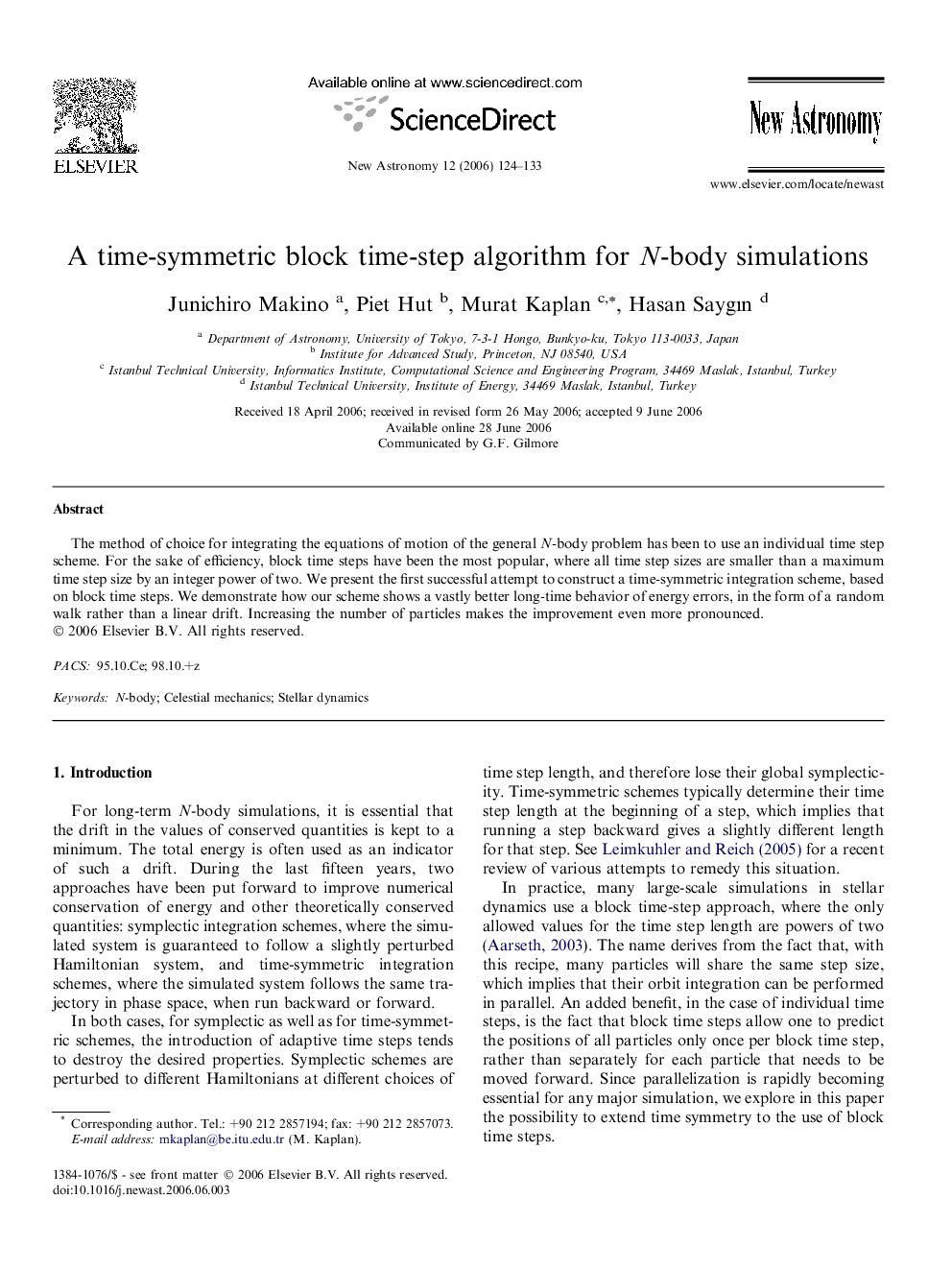| Article ID | Journal | Published Year | Pages | File Type |
|---|---|---|---|---|
| 1779537 | New Astronomy | 2006 | 10 Pages |
Abstract
The method of choice for integrating the equations of motion of the general N-body problem has been to use an individual time step scheme. For the sake of efficiency, block time steps have been the most popular, where all time step sizes are smaller than a maximum time step size by an integer power of two. We present the first successful attempt to construct a time-symmetric integration scheme, based on block time steps. We demonstrate how our scheme shows a vastly better long-time behavior of energy errors, in the form of a random walk rather than a linear drift. Increasing the number of particles makes the improvement even more pronounced.
Related Topics
Physical Sciences and Engineering
Physics and Astronomy
Astronomy and Astrophysics
Authors
Junichiro Makino, Piet Hut, Murat Kaplan, Hasan Saygın,
